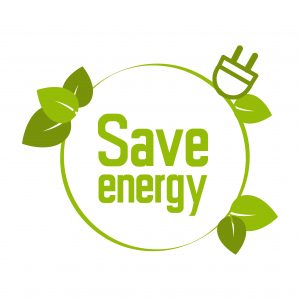Year-Round Energy Conservation Tips
- Use compact fluorescent lights. They last up to 10 – 13 times longer than standard bulbs and use 75% less energy.
- Install dimmer switches. In addition to enhancing the mood, they’ll extend the life of your bulbs and help you save up to 60% on your lighting costs.
- Lower the temperature of your water heater from 140° to 120°. You’ll save 3% -5% in water heating costs for each 10° reduction. Or consider a timer to turn your water heater off when not in use.
- Don’t keep your refrigerator or freezer too cold. Recommended temperatures are 37° to 40°F for the refrigerator and 5°F for the freezer.
- Don’t leave the fridge door open! Every time you do, up to 30% of the air inside can escape. The same can be said for your oven.
- Use a covered kettle or pan to boil water; it’s faster and it uses less energy.
- Air-dry dishes. Also, avoid using the heat-dry, rinse-hold and pre-rinse features.
- Choose a high-efficiency clothes washer and dryer. High-efficiency washers use half the water of standard models. High-efficiency dryers can save up to 30% in energy over standard models.
- Defrost food before cooking — you could save 30% to 50% on cooking costs. And pre-heat your oven only for baking.
- Install water-conserving fixtures, such as showerheads, faucets and toilets.
- Fix leaky faucets, especially hot water faucets. One drop per second can add up to 165 gallons per month — more than a person uses in two weeks.
- Install a programmable thermostat. When properly used, it could save as much as $100 or more off your annual heating bills.
Conservation Tips for Cold Weather 
- Sunshine! Windows on the south side of the house get the most sunlight. Eastern windows get sunlight in the morning. West facing windows receive sunlight in the afternoon. Open shades and drapes during the daytime to let the sun’s warmth enter your home, and close when the sun goes down.
- Close your kitchen vent, fireplace damper and closet doors when not in use.
- Remove air conditioning window units, or cover them well.
- Keep radiators free of dust for top efficiency.
- According to the U.S. Department of Energy, homeowners can save as much as 10% a year on their heating and cooling bills by simply turning the thermostat back by 10 to 15 degrees.
- Wrap your pipes, to guard against heat loss and prevent them from freezing.
- Avoid using space heaters. They’re expensive to operate, and can be dangerous, too.
- Check your threshold for any gaps between it and the door. Use a bottom seal that can be attached to the bottom of the door — it should brush up against the floor to seal up the threshold. It virtually stops drafts.
- Get a heating system tune-up — it’ll ensure you get maximum performance from every drop of heating oil burned.
- Make sure you have good insulation on exterior walls, ceilings with cold spaces above, and floors with cold spaces below.
- Change the windows. Consider new low-emissivity glass, which will decrease radiant heat loss without lowering visibility.
- Upgrade your oil burner — a modern burner can cut costs by 15%.
1 Source: National Oilheat Research Alliance
Information in this section is quoted from oilheatamerica.com

